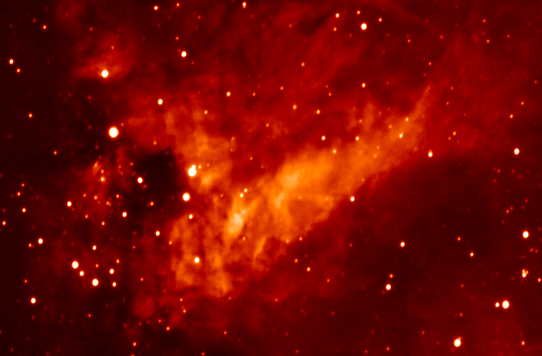
|
Credit: B. Wallis and R.
Provin
Explanation:
What unusual eggs have been laid by this majestic swan?
The star forming region above, known as
Swan Nebula,
is the home of hot red-glowing
gas, dark lanes of
dust,
bright young stars and -- what are those?
Of the few stars visible in the
Swan Nebula,
several have quite unusual colors and are
hypothesized to be very young stars still shrouded by gas from the cloud
that formed them. The
Swan
Nebula is quite large and massive as it contains
roughly 1000 times the mass of our
Sun. The bright central region is about
15 light years across lies about 5000 light years away toward the constellation of Sagittarius. The distinctive shape causes this region to
have several other names, including the Omega Nebula, the Horseshoe Nebula,
and the Lobster Nebula.
|
January February March April May June July August September October November December |
| ||||||||||||||||||||||||||||||||||||||||||||||||
NASA Web Site Statements, Warnings, and Disclaimers
NASA Official: Jay Norris. Specific rights apply.
A service of: LHEA at NASA / GSFC
& Michigan Tech. U.
Based on Astronomy Picture
Of the Day
Publications with keywords: M17
Publications with words: M17
See also:
